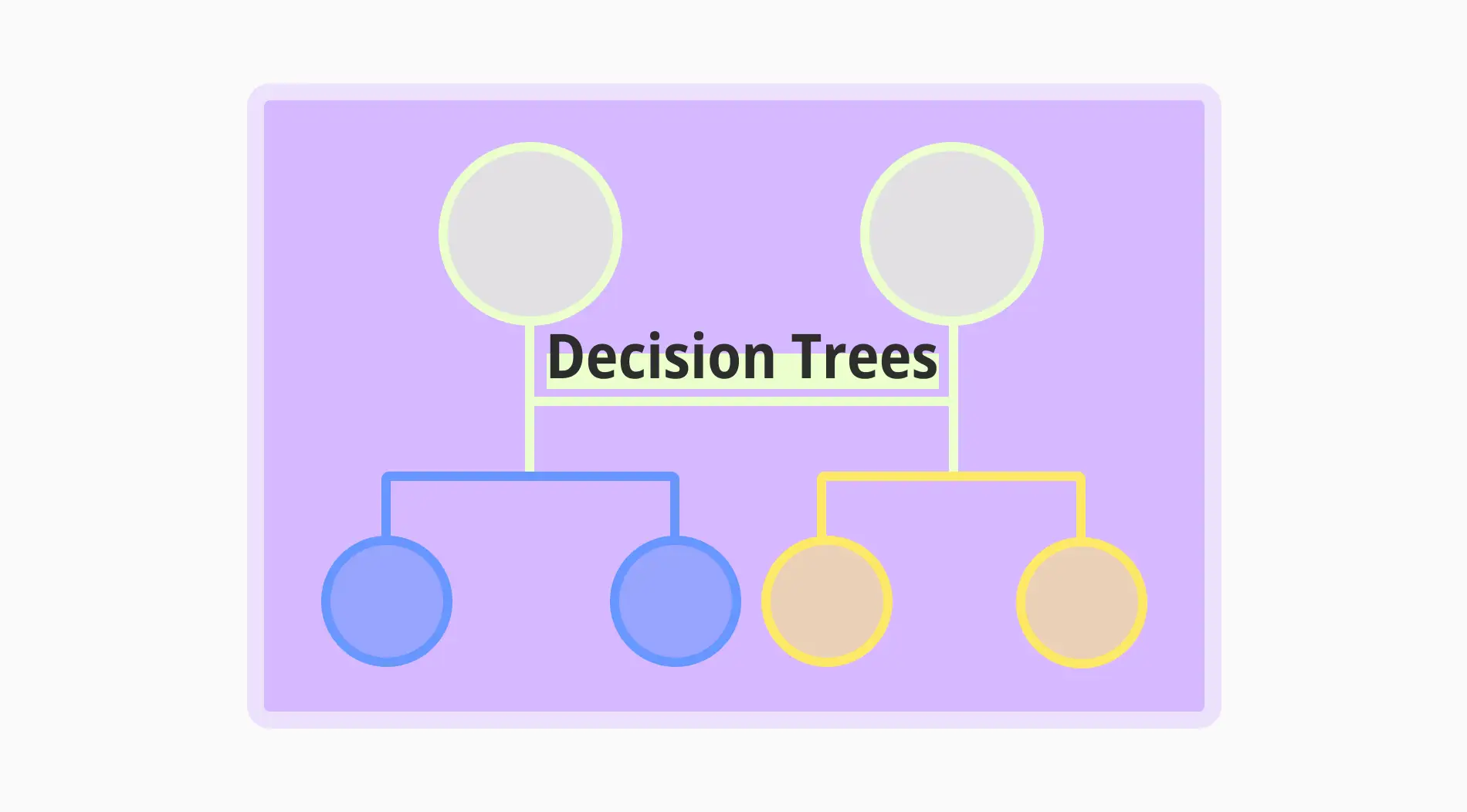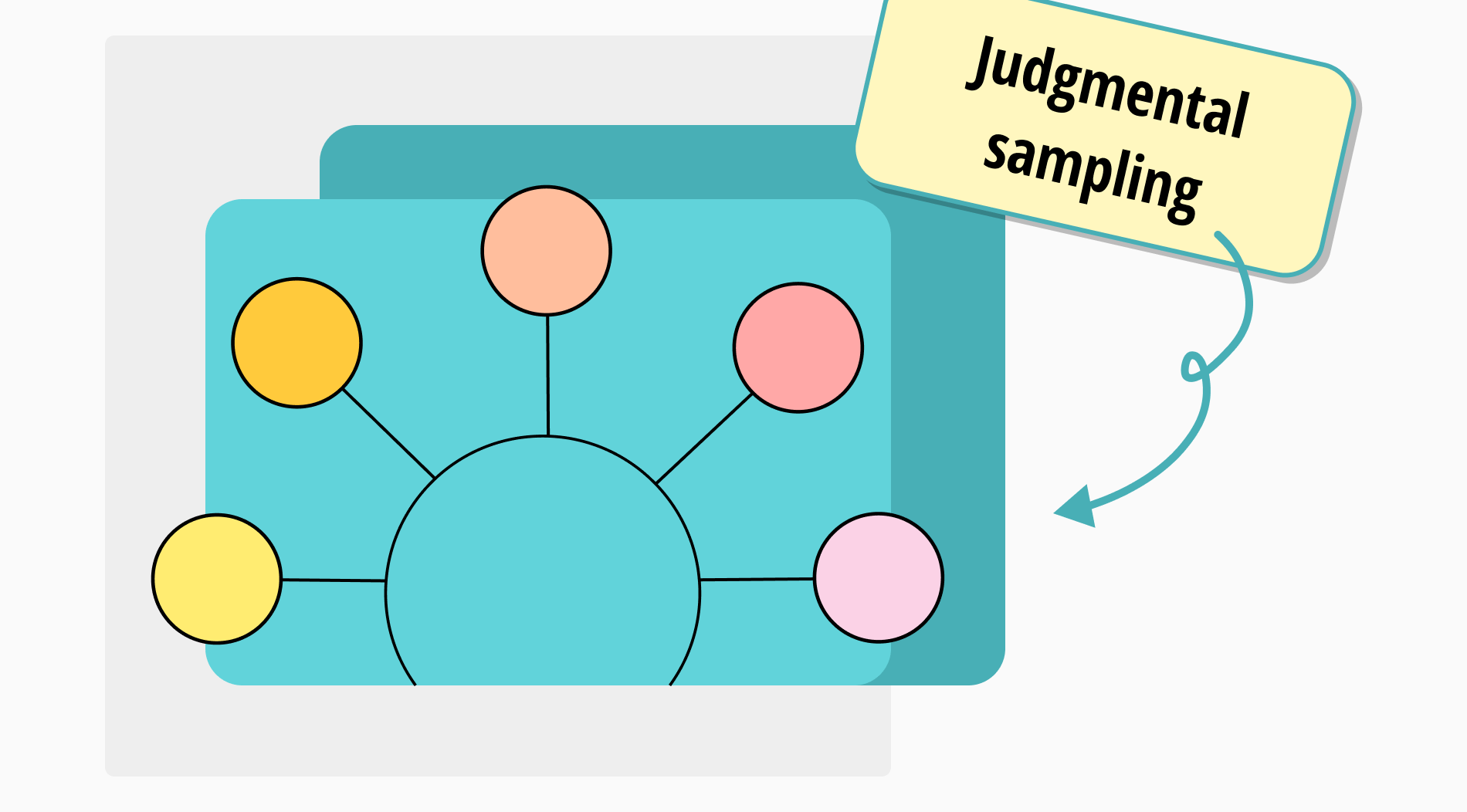
Do you know how companies manage to get so many variables into one decision? Or how they accurately identify fraudulent transactions? Decision trees are the answer to all this. Basically, decision trees break down decisions into more observable and manageable pieces, providing the framework for data analysis and insight into your decisions accordingly.
What is a decision tree?

A decision tree is a diagram used as a data analysis tool to enhance the decision-making process.
The reason for the tree structure analogy is that the nodes consist of roots, branches, and leaves, which represent the initial decision or problem, different opinions or tests, and final results and classifications, respectively.
Decision trees are powerful and simple tools that segment complex decisions into smaller, manageable parts. This allows easy visualization of the data analysis used to make accurate predictions, thereby allowing strategizing in many diversified fields accordingly.
When to use a decision tree
There is no specific time or situation for you to use a decision tree. It is a simple tool that can help you cope with most situations, even everyday problems. However, some situations under which the decision tree would be an appropriate inference procedure include:
⏰When explanations and interpretability of the results are of main concern
⏰When using it on the classification task (identifying spam emails and fraudulent transactions)
⏰When doing a regression analysis
⏰When preparing a predictive model
⏰When discovering non-linear relationships
⏰When turning insights into actions
Use cases of decision trees
Decision trees are versatile tools that can be used in various domains, such as healthcare, education, finance, marketing, and human resources. Here are two common use cases:
1. Churn prediction
Decision trees in the business world are used especially to offer subscription-based products or services. The churn event takes its place as the initial node; then, branches are created to list the factors that can cause churn.
In addition, statistical data such as customer satisfaction, the company's communication with customers, the user purchase rate, and the number of regular and abandoned customers are placed in the appropriate branches of your tree. When the decision tree is complete, churn patterns will emerge. Then, suggestions are made for measures to prevent churn.
2. Medical diagnosis
In the health field, diagnosing patients simply by using a decision tree is possible. You place the patient's height, weight, age, history, symptoms, test results, etc., into branches to do this. Then, you make predictions by creating probability branches. Finally, you compare the probabilities, determine your final decision, and diagnose the patient.
How to create a decision tree (step-by-step)
Creating a decision tree is a fairly simple process. You can either use technology programs or simply draw with a pen on paper. If we assume that you have a specific research purpose or problem and that your data has already been collected, you can create a decision tree in three steps.
1. Drawing the initial node: First, select the most important attribute affecting your decision, which will be your root node. Start creating branches based on the root node attribute and divide the data you have prepared before. Continue by labeling the branches as you create them.
2. Expanding nodes: Create branches that include different decisions by considering the next steps of the branches you have labeled. These branches represent probabilities and definitive results. You should draw two of them in different ways so that it will be easier to interpret later.
3. Reaching final nodes: Continue doing step two until you don’t need to add new branches. Then, each of these branches will end with a result node. This is necessary to facilitate comparison between result nodes and to perform the evaluation.
Examples of the decision tree
Here are two sample cases to give you an idea of how to create nodes in a typical decision tree. Although the examples here are in the field of market research, you can think of them as a decision tree template and adapt them to your own field of work.
Example #1
A game company aims to release a new type of game to the market. However, they want to find the target audience of the game by placing the data they collect into nodes in a decision tree to reach a final decision.
Root node: Age
Branch 1: Under 18s
Internal node: Gaming Platform Preference
Branch a: PC
Leaf node: Interest in sandbox games
Branch b: Mobile
Leaf node: Interest in casual games
Branch 2: Age 18-30
Internal node: Gaming experience history
Branch a: Role-play games
Leaf node: Interest in online role-play games
Branch b: Strategy games
Leaf node: Low interest in general
Example #2
A clothing company wants to learn about its customers' purchasing habits to provide them with better service.
Root node: Shopping Frequency
Branch 1: Frequent buyers
Internal node: Types of products purchased
Branch a: T-shirts
Leaf node: Increased rates, especially in summer
Branch b: Jeans
Leaf node: Increased rates, especially in autumn
Branch 2: Rare buyers
Internal node: Types of products purchased
Branch a: Bags
Leaf node: Increased rates, especially in spring
Branch b: Coats
Leaf node: Increased rates, especially in winter
Pros & cons of using the decision tree
Decision trees have advantages and disadvantages, as is the case with any analytical tool. Knowing what these are aids in deciding when and how to effectively implement a decision tree in various scenarios.

Advantages and disadvantages of using decision trees
➕Simple and easy to understand: Decision trees require no expertise, so they are easy to use when making a decision.
➕Being visual makes interpretation easier: It facilitates comprehension thanks to its visuality when sharing information with others.
➕Qualitative or quantitative data types can be examined: Examining two different types of data provides a more comprehensive analysis opportunity.
➖Making changes leads to mass changes: It is sensitive to data variations; be careful when making significant changes.
➖There may be bias in feature selection: Certain branches and features may become particularly prominent, inadvertently shaping decision-making.
➖If the data is low quality, the schema is also low quality: If your data collection step is incomplete or incorrect, you will not get an efficient result.
Frequently asked questions about the decision trees
You can take a look at the FAQ below to read answers to questions directly related to decision trees.
Un árbol de decisiones es una estructura similar a un árbol utilizada como diagrama. Hay principalmente varios tipos de árboles de decisiones, distinguidos por su propósito y la naturaleza del proceso de toma de decisiones. Estos incluyen árboles de clasificación y árboles de regresión. Los árboles de clasificación se utilizan cuando la variable de resultado es categórica. Clasifica los datos en grupos distintos, como determinar si una transacción es legítima o fraudulenta.
Por otro lado, los árboles de regresión se emplean cuando la variable de resultado es continua. Ayuda en la predicción de valores numéricos. Esto es particularmente útil para la previsión, como predecir los ingresos de ventas basados en varios factores de entrada. Ambos tipos de árboles de decisiones ofrecen un método claro y estructurado para analizar datos. Pueden ser utilizados para tomar decisiones informadas.
Un árbol de decisiones puede ser una herramienta que una empresa utiliza para decidir si lanzar un nuevo producto o servicio es una buena idea. En tal ejemplo, el nodo raíz es la primera decisión o pregunta que se hace. "¿Vamos a lanzar el producto o servicio?" Los nodos internos son los factores que rodean esta decisión o problema. En particular, se enumeran factores como investigación de mercado, costos de producción y suministro del producto/servicio, y satisfacción del cliente.
Estos nodos internos también pueden ramificarse y mostrar diferentes resultados. Puede haber ramas como "Los costos de producción son bajos" o "La satisfacción del cliente es alta." Finalmente, las decisiones finales se encuentran en los nodos hoja. Con decisiones como "cancelar el producto," "lanzar el producto inmediatamente," o "lanzar el producto con un retraso," el árbol revela toda la estructura de decisión, permitiéndole evaluar todos los factores fácilmente.
Un árbol de decisiones consta de tres ramas principales: el nodo raíz, los nodos internos y los nodos hoja.
- El nodo raíz del árbol simboliza la decisión inicial y representa todo el conjunto de datos.
- Luego, hay nodos internos, también llamados nodos de decisión, que representan diferentes decisiones o pruebas de atributos, y conducen a una mayor ramificación.
- Por último, están los nodos hoja, también llamados nodos terminales, que representan el resultado final o la predicción.
En este sentido, cada rama del árbol de decisiones ayuda a tomar decisiones de manera organizada y sistemática al descomponer decisiones complejas en componentes más simples y manejables.
Key points to take away
All in all, decision trees offer a simple visual method in the decision-making process. They can be utilized in more complex data analysis techniques to enhance stability. They are capable of representing qualitative and quantitative data so that they can be used in many different disciplines.
Although it has some disadvantages, such as instability, it is a tool that will always continue to be used with its simplicity and usability. This article explains decision tree examples with solutions so that you can now be informed and take action. It is your turn now.
Atakan is a content writer at forms.app. He likes to research various fields like history, sociology, and psychology. He knows English and Korean. His expertise lies in data analysis, data types, and methods.



 5 minuti di lettura
5 minuti di lettura

